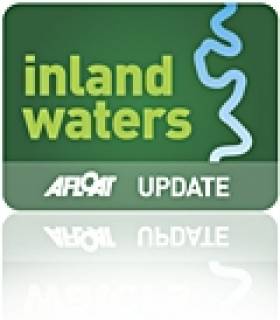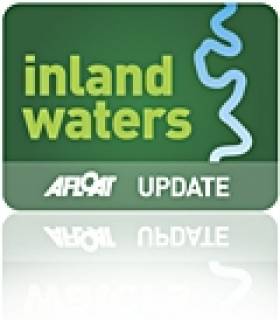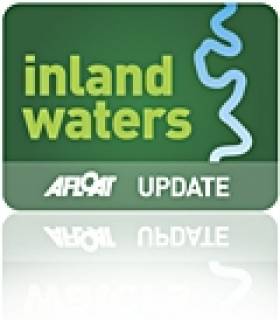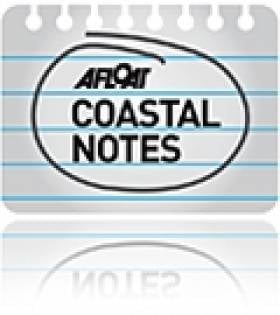Displaying items by tag: Canals
IWAI Urges Participation In Canal Bye-Laws Consultation
#Canals - In welcoming Waterways Ireland's draft Corporate Plan for 2014-2016, the Inland Waterways Association of Ireland (IWAI) has urged its members to participate on the public consultation on the introduction of new canal bye-laws.
As previously reported on Afloat.ie, submissions are being sought on the changes to the Draft Canals Act 1986 (Amended) Bye-Laws - covering the Grand Canal, Royal Canal and Barrow Navigation - with the consultation period closing on 3 February 2014.
IWAI president Carmel Meegan is encouraging all members of the association and the general public to engage in the consultation and respond before the closing date.
"Key objectives of the process must be to ensure that the canal regulations encourage and nurture the growth of domestic and international boat tourism on these fine navigations," said Meegan.
The bye-laws can be viewed on the Waterways Ireland website HERE or by arrangement at Waterways Ireland Offices in Dublin (Tel: 01 882 3301) and
Enniskillen (Tel: +44 (0)2866 346 214).
The IWAI says it will prepare a response to the proposed bye-laws.
Conference To Discuss State of Canals, Railways And Other Industrial Heritage
#Canals - Ireland's canals - along with the railways, mines and mills - carried the lifeblood of Ireland's burgeoning industrial age. But has this heritage been forgotten today?
That's the topic of discussion at The Forgotten State of Industry, a two-day international conference that will bring together speakers from Ireland, Europe and beyond to share their experiences of conserving, managing and presenting the remnants of the early industrial age.
The conference takes place from 18-19 October at the Glendalough Hotel in Co Wicklow. Information on ticketing, registration and more is available via the Heritage Council website HERE.
Extolling the Benefits of Canal Living
Today's Irish Times looks into the lives of people who've made their homes on or near Dublin's canals.
One resident is Breffnie O'Kelly of Percy Place, whose back garden abuts the banks of the Grand Canal - which has experienced a revival in recent years, with dredging work now completed and a new cycle path on the way.
O'Kelly is also a member of the Friends of the Grand Canal Group, which meets regularly to keep their stretch of the canal clean.
Another voice singing the praises of the canal is author John Banville, who has set much of his crime fiction in the area around Lower Mount Street, where he himself lived for a time.
The Irish Times has more on the story HERE.
Grand Canal Dredging Begins This Month
Waterways Ireland has confirmed that further dredging of the Grand Canal in Dublin will commence this month and continue till the end of April on the inland waterway.
The canal will be closed to navigation from Lock C4 at Baggot Street to Lock 1 at Suir Road for the removal of sediment and rubbish between Mespil Road and Portobello Harbour, making the canal navigable for a large range of boats.
Traffic management plans have been agreed with Dublin City Council to keep disruption to a minimum, and discussions have taken place with the National Parks and Wildlife Service on measures to minimise the impact on sensitive habitats along the canal.
Heritage Council's Online Marine Publications
The following topics below are just some of the categories featured, they include the Bere Island Conservation Plan, Ireland's Sharks & Rays, Conserving Ireland's Maritime Heritage and an Audit of Maritime Collections.
The maritime heritage section of the Heritage Council covers the cultural, physical and ecological dimensions. In addition it embraces the legacies of past generations, their traditions and natural features of both coastal and offshore environments.
For those interested in freshwater topics, the Heritage Council also recognises the importance of our inland waterways and canal network. The Heritage Council has undertaken a Waterway Corridor Studies on the Shannon, as well as on parts of the Grand and Royal Canals. For further information and downloadable in PDF format logn to www.heritagecouncil.ie/inland_waterways/
Heritage Boat Association
The Heritage Boat Association’s aspiration is to protect, promote and celebrate the floating heritage on the inland waterways of Ireland. What's remaining of our Floating Heritage provides us with a direct link to the past and includes both commercial and pleasure craft that plied the inland waterways through the different eras of the canal, lake and river systems.
If you are interested in Irish barges, canal boats, lighters, old wooden boats, steam tugs, steam yachts, sailing barges, historic boats that have ended up on the Irish inland waterways or our work, do contact us.
So - what is so interesting about Heritage Boats?
A Heritage Boat is described as being consistent with the provisions of the Heritage Act 1995, to mean a boat over 25 years old which is of significance because of it’s intrinsic construction or because of it’s association with the commercial, cultural, economic, industrial, military, political, social or other history of the country.
'Celebrating Ireland's Floating Heritage'



























